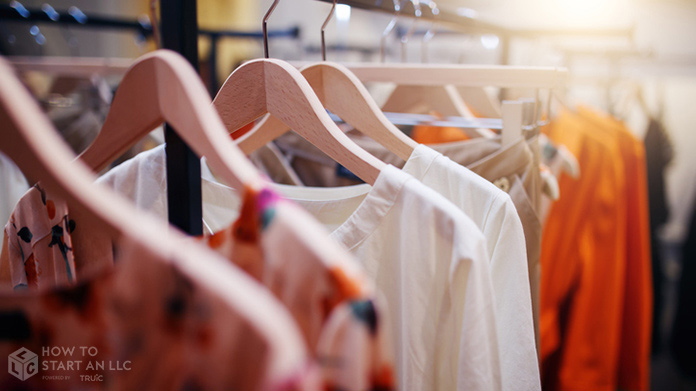The Clothing Boutique Purchasing Guide

Make smart decisions when purchasing equipment for your Clothing Boutique. Learn about the equipment you will need, typical costs, and where are the best places to buy it.
Most clothing boutique owners will need the following equipment to get started:
|
|
This list doesn't include the initial stock of clothing you will need to launch your store, which may cost up to $10,000 or more. You should plan on budgeting anywhere from $10,000 - $20,000 for initial purchasing costs.
Sample List of Purchases
A typical person looking to purchase equipment for a clothing boutique might make the following purchases:
|
|
Grand Total: $11,702
Picking the right clothing source is arguably the most important buying decision you’ll make when starting a clothing boutique. We outline the key considerations you’ll need to keep in mind when making this purchase and provide some popular options.
Considerations When Buying Clothing
Know the Risks of Purchasing Online
When purchasing online, never buy in bulk without ordering a sample first to see the quality of the product. Conduct thorough research of the company you are buying from and look for customer reviews to make sure they are a reliable source.
Create a Cohesive Style
It is always important to keep a cohesive style and theme for your boutique store to attract the right customer base. Who is your target audience? What clothes would they most likely wear? What atmosphere would best fit the clothes? These questions can help you determine what clothes you should stock.
Buy from a Variety of Sources
There are four main ways of sourcing for clothing listed below. We recommend buying from a mixture of these four until you are able to determine the sources that best fit your business. Buying from a number of different sources will also create a diverse selection for your customers.
Options for Sourcing Clothing
Wholesale
A common choice for many people starting their own clothing store, wholesalers are businesses who sell to small retailers at smaller quantities than they can buy directly from manufacturers. Contract agreements made with wholesalers must be thorough, spelling out every detail such as pricing, ordering requirements, delivery charges, and promised delivery times.
Thrifting
For store owners who want to create an unique, vintage style for their store, and who have lots of times on their hands to sort through many thrift stores for unique treasures, this is a great option. However, it's important to make sure you're making a profit off of thrifted items, including the time you put into finding them.
Independent Designers
A great option to gather unique pieces from the latest trends is through finding smaller, independent designers. There are many blog sites to find these designers and directly contacting them to have pieces displayed in your store.
Trade shows
Events where designers gather to show their newest designs for each season, trade show gives owners many options to explore all in one convenient space.
With the recommended choices listed above, there are many different options to find clothing. Wholesale sources can oftentimes be found online. Contacting independent designers is also an option to explore online. Meanwhile, thrifting and trade shows are both sources that require travel and exploration in person. Trade shows are a must for clothing boutique owners to keep up to date with the latest trends.
Wholesale
Wholesale sources are accessible and provide a range of styles and products. Here are some popular wholesale sources for clothing.
Thrifting
Thrifting is great for finding unique pieces, making your clothing boutique stand-out and have options that others cannot offer. It may also be a cheaper option for starting your boutique. Yelp.com is a great resource for finding local thrift shops.
Independent designers
This option creates an inventory that customers won't be able to find in larger retailers and a store that will most likely have the latest trends. It also supports smaller designers and thus builds better business relationships. Here’s some sources to look for designers:
Trade shows
Trade shows provide great exposure to many different designer brands, and allow buyers to see the clothing quality up close as well as stay up-to-date with seasonal trends.
Next Steps
Find out more about what goes into starting and running a clothing boutique
Protect your personal assets from unexpected legal claims. Consider structuring your business as an LLC.
Sign up at our Business Center to access useful tools for your business.